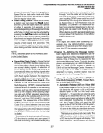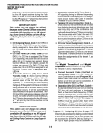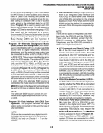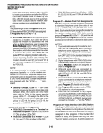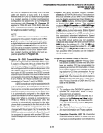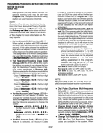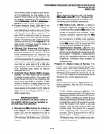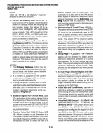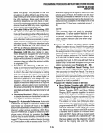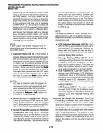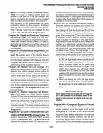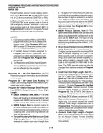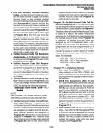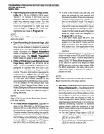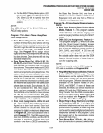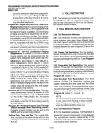
PROGRAMMING PROCEDURES-INSTRUCTIONS/SYSTEM RECORDS
SECTION 100-816-302
MARCH 1993
0
same VM group. The purpose of the VM
grouping is to allow efficient use of the mes-
sage waiting set and cancel operations from
the VM machines. Since each digital and
electronic telephone can only have a maxi-
mum of four messages waiting, the voice mail
device should set MW only once, regardless
of how many messages there are.
Voice Mail (VM) to VM Call Blocking, LED
04-This prevents VM/auto attendant ports
from call forwarding to other VM ports during
screened or supervised VM transfers. If VM/
auto attendant calls are screened or super-
vised, this LED should be ON for all VM/auto
attendant ports; if VM/auto attendant calls
are blind transferred, this LED should be
OFF for all VM/auto attendant ports.
Off-hook Call Announce (OCA) Enabled
(Receive), LED 03-Any digital or elec-
tronic telephone equipped for OCA should
be assigned this option. If assigned, the
station will be allowed to receive OCA. This
program does not affect the station’s ability
to originate OCA.
Handsfree No Warning, LED 02-Nor-
mally, a one-second warning tone is sent to
a handsfree digital or electronic telephone
to inform the user that someone is calling
and that they can be heard. If the warning
tone is not desired at the called digital or
electronic telephone, this assignment can
disable it. This will also prevent ringing the
digital or electronic telephone as a ring-first
situation, allowing silent room monitoring of
the area surrounding the telephone. Initial-
ized data activates the warning tone for all
ports.
Handsfree Disabled, LED 01-It is possible
to disable the intercom handsfree function on
any digital or electronic telephone.
Program 32-Automatic Preference: Automatic
Preference for digital or electronic telephones
(see Note) via handset off-hook or the Spkr
button is the automatic connection to CO lines or
intercom under various conditions. With Ring-
ing Line Preference, a digital or electronic tele-
phone going off-hook (or pressing the Spkr
button) may be automatically connected to the
lowest CO line ringing in without having to press
a CO line button or dial an access code. If no CO
lines are ringing and a digital or electronic tele-
phone goes off-hook, the station can be auto-
matically connected to intercom or to a CO line.
The CO line connected can be the lowest num-
bered CO line available on the telephone or the
highest idle CO line from a selected group (1 -
8).
NOTE:
This program does not apply to standard
telephones. To allow system features to be
accessed, standard telephones always re-
ceive system intercom dial tone when origi-
na ting calls.
Program 33-Station Hunting (Voice Calls
Only): If astation is busy, Station Hunting allows
the ringing of an alternate station as defined by
the assignments in this program. If the “hunt-to”
station is busy, the system will try to ring the next
“hunt-to” station, and so on. If a “hunt-to” station
is in the Call Forward mode, the Call Forward
overrides the hunt. A CO Line will hunt from a
station only if it has been assigned to ring at that
station exclusively (see Programs 81 - 89).
Program 34-Hold/Park Recall Timing: Each
station can have a different time (from 011 to
160 seconds) for Hold/Park Recall. The time is
the duration between the point when the call is
placed on hold or parked and the point when the
held or parked should recall the station that
placed it on hold or parked it.
Program 35-Station Class of Service:
l
Busy Station Transfer with LED 20 and
Busy Station Ringing with LED 19-Busy
Station Transfer (BST) and Busy Station
Ringing (BSR) operate together to ensure
that a busy digital or electronic telephone
station always receives transferred CO line
calls along with LED and tone indications.
The station or Voice mail (VM)/auto atten-
dant device that transfers the call must be
programmed with BST (LED 20 ON) and the
one that receives it must have BSR (LED
19). When a busy station with BSR receives
a transfer from a station or VM/auto atten-
dant with BST, there will be a muted repeti-
tive tone (1 second ON, 3 seconds OFF) at
the busy station and the intercom LED will
flash at the ringing rate until the station
2-15



